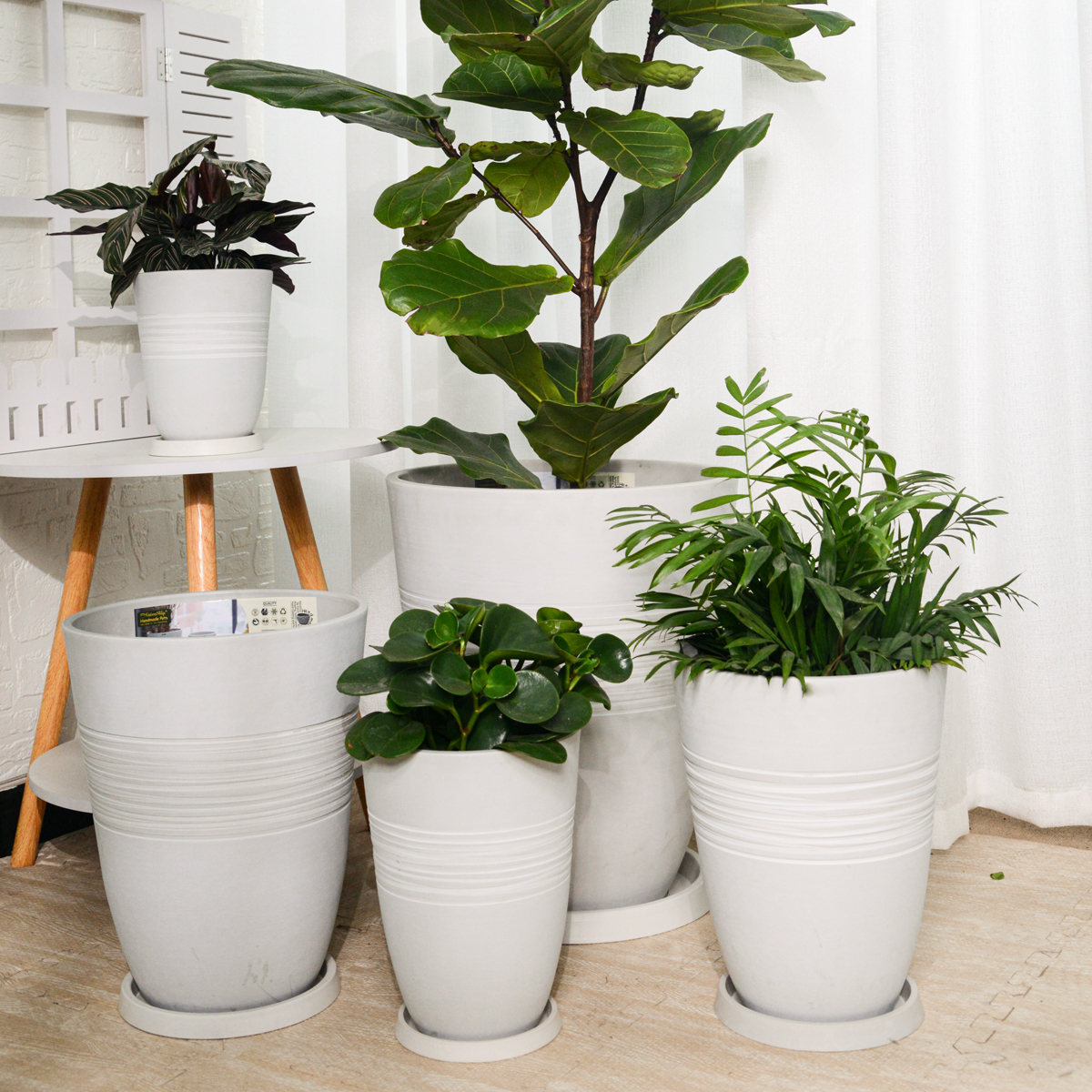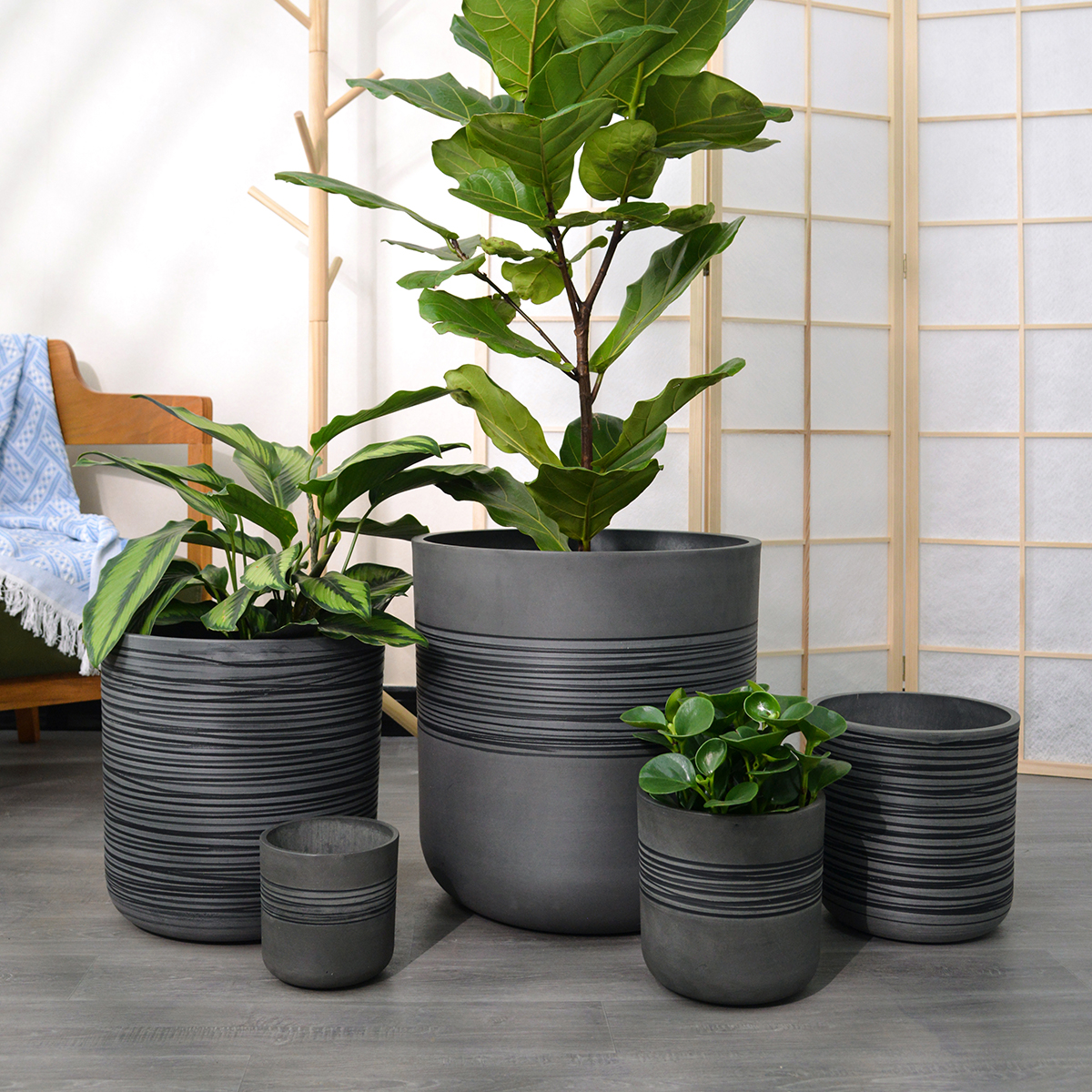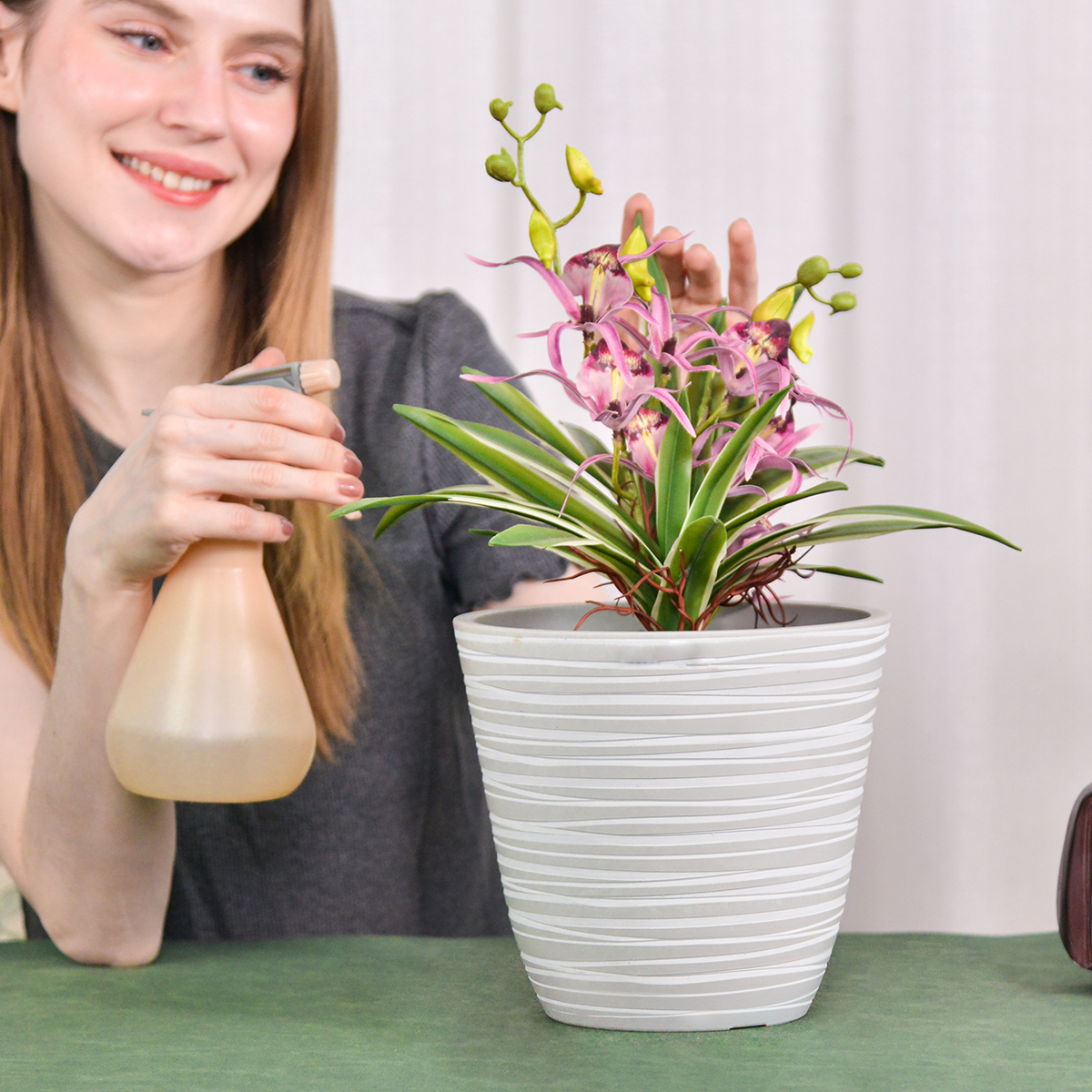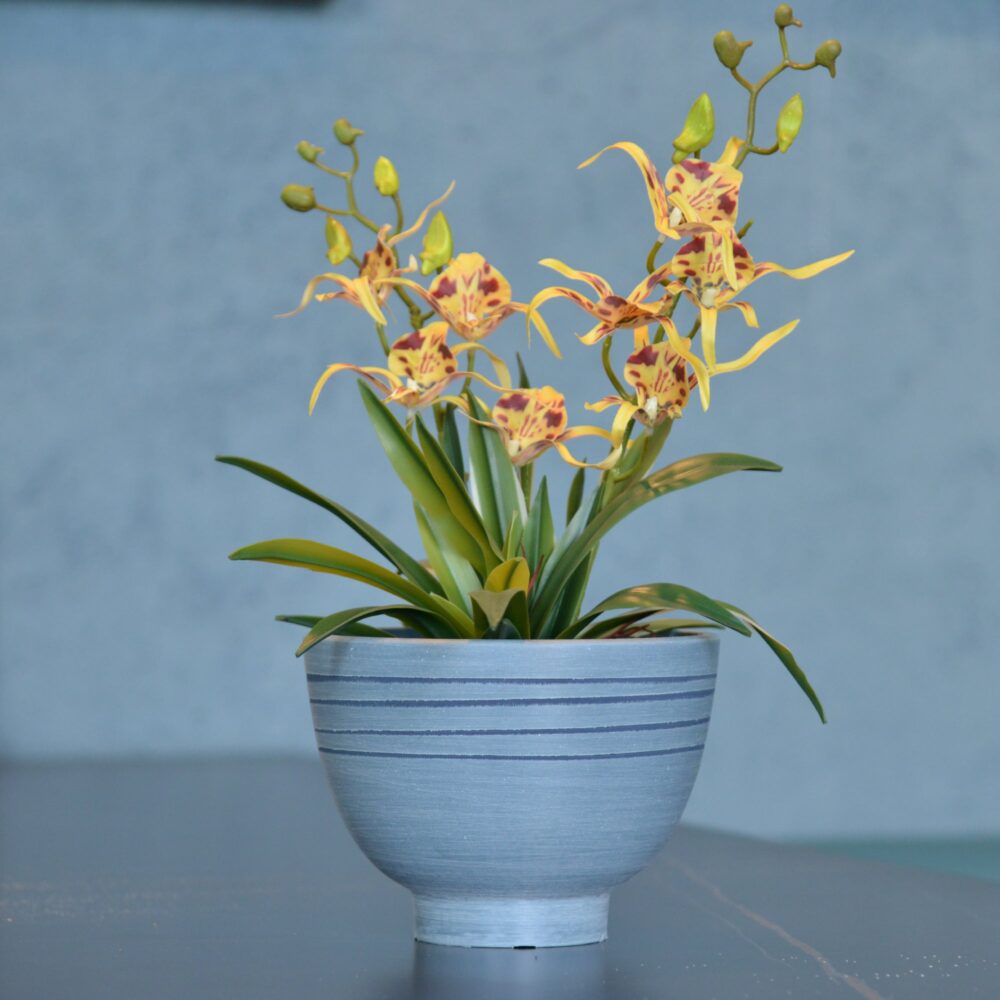Do the Color and Pattern of Flower Pots Affect Plant Growth? What Are Some Aesthetic Considerations When Choosing Flower Pot Colors?
When selecting flower pots for your beloved plants, you’re likely drawn to certain colors and patterns that catch your eye. But beyond aesthetics, you might wonder if the hue and design of your chosen container can actually impact how your plants grow. Let’s explore the potential effects of flower pot color and pattern on plant health, and then dive into the aesthetic considerations that can guide your choices.
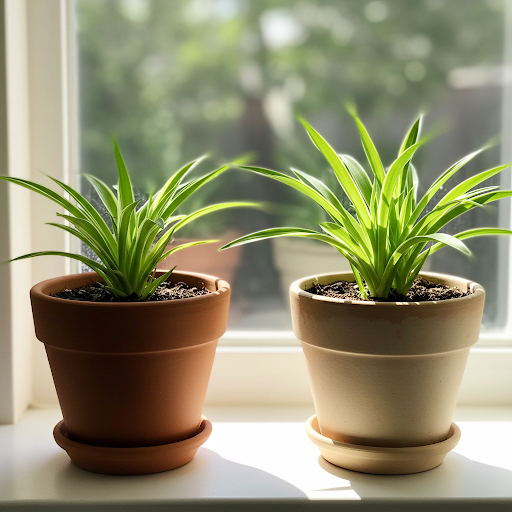
Do Color and Pattern Affect Plant Growth?
Generally, the color and pattern of a flower pot have a minimal direct impact on the plant’s growth. The primary factors that influence plant health are drainage, pot size, material, and the growing conditions provided (light, water, nutrients). However, there are a few indirect ways that color might play a minor role:
- Heat Absorption: Dark-colored pots, especially those made of materials that readily absorb heat like terracotta or dark plastic, can heat up more in direct sunlight compared to lighter-colored pots. This can potentially lead to higher soil temperatures, which might be beneficial for some heat-loving plants but could stress others, especially in hot climates. Conversely, light-colored pots might reflect more sunlight and keep the soil slightly cooler. The difference is usually not drastic, but it’s something to be mindful of, particularly in extreme weather conditions.
- Light Reflection (Minor): While the primary source of light for plants is usually from above, a very light or reflective pot could potentially bounce a tiny amount of light back onto the lower leaves of the plant. However, this effect is generally negligible compared to the main light source.
- Pattern (No Direct Impact): The pattern on a flower pot has no known direct effect on plant growth. Plants don’t “see” the patterns in a way that would influence their physiological processes.
In summary, while extreme dark colors might lead to slightly warmer soil temperatures, the color and pattern of your flower pot are unlikely to be major determinants of your plant’s health. Focus on providing the right growing conditions and choosing a pot with proper drainage and the appropriate size.

Aesthetic Considerations When Choosing Flower Pot Colors:
Now that we’ve addressed the impact on plant growth, let’s delve into the fun part: aesthetics! Choosing the right flower pot color can significantly enhance the visual appeal of your plants and complement your overall décor. Here are some aesthetic considerations:
- Complementing the Plant’s Foliage and Flowers: Consider the natural colors of your plant.
- Green Foliage: Earthy tones like terracotta, brown, or muted greens can create a natural and harmonious look. Contrasting colors like white or even a bold blue can make the green pop.
- Colorful Flowers: Choose pot colors that either complement or contrast with the flower hues. For example, a vibrant red flower might look stunning in a neutral gray or black pot, while soft pink blooms could be beautifully paired with a pastel green or white pot.
- Matching Your Existing Décor: Think about the color scheme and style of the space where the plant will be placed.
- Indoors: Consider the colors of your walls, furniture, and other decorative elements. You might want the pot to blend in seamlessly or to stand out as a statement piece.
- Outdoors: Consider the colors of your house, patio furniture, and other garden elements. Terracotta and natural tones often work well in traditional garden settings, while sleek, modern planters in black, white, or metallic shades can complement contemporary outdoor spaces.
- Creating a Mood or Style: Different colors evoke different feelings.
- Calming and Natural: Earthy tones, soft greens, and whites can create a serene and relaxing atmosphere.
- Bold and Energetic: Bright colors like red, yellow, or orange can add a vibrant and playful touch.
- Sophisticated and Modern: Black, white, gray, and metallic colors often convey a sense of elegance and modernity.
- Personal Preference: Ultimately, the best color for your flower pot is the one you love! Don’t be afraid to choose colors that bring you joy and reflect your personal style.
- Contrast and Harmony: Experiment with color theory principles. You can create visual interest by using contrasting colors (colors opposite each other on the color wheel) or achieve a more cohesive look with harmonious colors (colors that are next to each other on the color wheel).
- Seasonal Considerations: You might choose different colored pots to reflect the changing seasons. For example, warm, earthy tones might feel right in the fall, while bright, cheerful colors could be perfect for spring and summer.
By considering both the subtle potential impact on plant growth and your aesthetic preferences, you can make informed and stylish choices when selecting flower pots that will showcase your plants beautifully and enhance your living spaces.
KC2-11VH
By greenship|2024-08-16T06:19:28+00:00August 16, 2024|Categories: Hand-carving Series|
KC2-21G
By greenship|2024-08-13T06:19:08+00:00August 13, 2024|Categories: Hand-carving Series|
k2-21G
By greenship|2024-08-13T06:17:26+00:00August 13, 2024|Categories: Hand-carving Series|
11V
By greenship|2024-08-13T03:05:48+00:00August 13, 2024|Categories: Hand-carving Series|
8 inch/10 inch Planter Indoor Plants, 2 Pack Modern Decorative Plant Pots with Drainage Hole, Cute Bowl Shape Flower Pots
By greenship-seo|2025-04-10T08:03:42+00:00January 9, 2025|Categories: Hand-carving Series|Tags: Decorative Flower Pots, Self-Watering Pots|
20VD
By greenship|2024-08-13T06:43:41+00:00August 13, 2024|Categories: Hand-carving Series|

